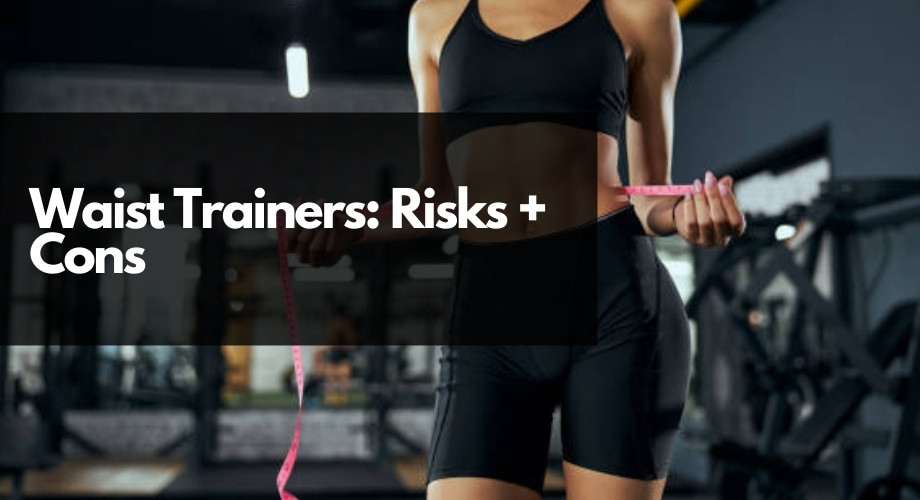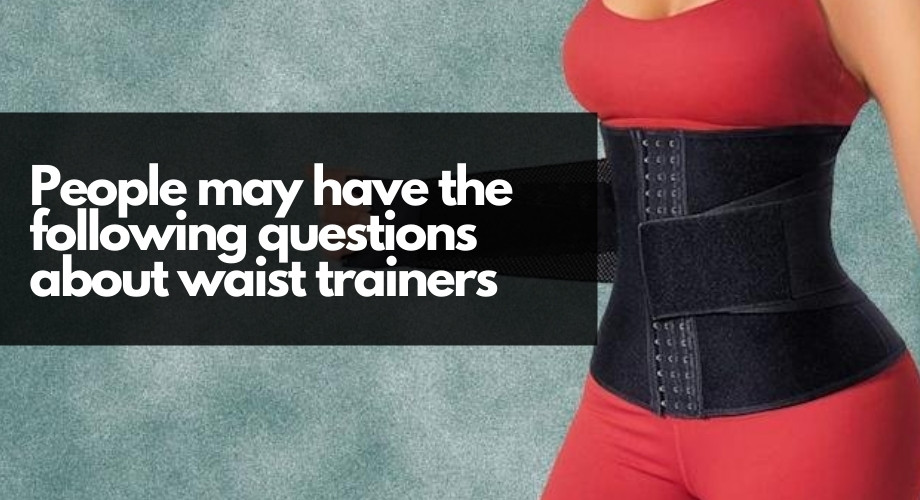Most women are inspired by the stories of celebrities who practice waist training and wear shapewear regularly. Sisters Kardashian, Madonna, famous bloggers share their photos on social media and arouse interest in waist trainers of ladies around the world.
Is it really possible to model an hourglass figure with the help of the bands and cinchers that provide compression? Yes, this is not a myth. But the sharpest question is still the same for first-comers: “Are waist trainers safe?”. Let’s dive into the topic together to discover all the advantages and risks for female health.
Waist training has been used to lower a woman’s natural waist size for thousands of years. The Victorian Era was the most noteworthy era of waist training popularity while having roots as far back as 3,000 BC (wow). Corset training was at its most popular (and rigorous). There’s no shortage of disturbing photographs of women with waistlines so thin that you could probably wrap your hand around them, the majority of whom have succumbed to the tremendous social pressure to have ever-smaller waistlines.
After a period of on-and-off prominence (very off in the 1960s and 1970s and semi-on in the 1980s), the waist training movement has evolved into a much more modern version, gaining traction through celebrity-sponsored social media posts. A few celebrities have come out to support waist training, and unlike our sad forefathers’ society, waist training today serves a much more liberating function for women and their health!
A waist trainer, like a girdle, is a slimming garment. The waist trainer tightens a person’s stomach to the maximum extent possible. The purpose of a waist trainer is to give the user a slimmer, smaller waist by pulling on it. Waist trainers work are often made of strong fabric with rough fibers. The trainer is held by hooks, Velcro, lacing, or other sturdy closures. Advocates claim that by wearing the garment frequently and for a lengthy period, the waist can be “trained” to maintain a smaller shape. Some people believe that wearing a waist trainer will help you lose weight.
Table of Content
- To Waist Train or Not to Train: That Is the Question
- Benefits
- Cons
- FAQ: People may have the following questions about waist trainers
- Is it effective in reducing body fat?
- Is it OK if I wear it to the gym?
- Is it safe to wear while pregnant?
- Is it true that waist trainers are bad for your health?
- Is it safe to wear a waist trainer for an extended period?
- Is waist training effective in reducing stomach fat?
- Do waist trainers make you look like you have hips?
- Do waist trainers help you slim down your rib cage?
- Is it OK to wear a waist trainer after giving birth?
- Is it possible to waist train safely?
- Is it true that a waist trainer should hurt?
- Final Word
To Waist Train or Not to Train: That Is the Question

The shapewear brings a positive effect when it comes to the women’s body lines. The silhouette becomes more womanly with the slim waistline and decreased fat on the belly, hips, sides, and core. There are various types of waist trainers including corset-like underwear, bands, and cinchers. Each model obtains different compression intensity and supportive features like:
- Back support;
- Sauna effect;
- Increased sweating and heating;
- Fat burning, etc.
Each seller informs potential buyers about the material the body-shaping garments are made of and provides detailed instructions to be sure that the shapewear is going to be used safely. This way, some cotton corsets with mild compression intense will be suitable as the compression-driven alternative to underwear. But the rubber models with metal or steel strokes should be worn only during workouts or less than 6-8 hours nonstop.
Waist Trainers: Pros
Among the main advantages of the waist trainers are:
- Back support. The shapewear can reduce backache and improve posture.
- Fat burning. The models with the sauna effect heat the muscles and force them to constrict faster while burning more fat on the tummy, waistline, and sides.
- Hourglass figure. It is possible to model your body safely with the help of high-quality waist cinchers, bands, and corsets.
- Hiding excess inches/centimeters on the waistline. The shapewear can be worn occasionally alternatively to underwear to make the body lines more attractive. Most corsets are invisible under any outfit.
To sum up, all these PROS prove the fact that women can waist train safely if they follow shapewear sellers’ recommendations, have no contradictions, and avoid extreme waistline reduction like Ethel Granger.
Waist Trainers: Risks + Cons

The risks also take place when it comes to using waist trainers. You should always be responsible for your health while wearing body-shaping garments. In case of surfeit compression, unsuitable waist trainer’s size, and excessive waistline reduction, the following dangerous risks can take place:
- Internal organ excess pressure;
- Harmful modifications of ribs and spine;
- Shortness of breath.
But you can avoid these side effects of wearing waist trainers if you select the best-matching body-shaping model for your needs (everyday use, workouts, etc.) and use it according to the guidelines.
Work on your waistline! It’s been around forever, but owing to celebs and influencers like Ms. Kim K, who is featured above in this famous mirror selfie, it’s witnessed a recent resurgence in popularity. These celebrity endorsements have prompted a surge of inquiries and concerns regarding the health and safety of waist training, along with an increase in popularity. Is waist training a good idea? Although there is a bad way to do waist training that can have serious health consequences (we’ll go over those later), there is also a completely safe and helpful way to use waist training to improve your beauty as well as your physical well-being!
Benefits
Waist trainers, according to some, might provide a variety of benefits to those seeking a slimmer body shape. These are some of them:
Hourglass figure
The biggest benefit of wearing a waist trainer is that it is a quick and easy way to get an hourglass appearance. While the waist trainer may provide that impression while worn, the garment will not significantly alter a person’s body form, according to the American Board of Cosmetic Surgery (ABCS) blog. The right waist trainer is unlikely to have a long-term effect once removed. Instead, if someone wants to lose weight or boost their fat loss, they should improve their diet and exercise more frequently.
Weight loss
Any weight reduction from using a waist trainer is more likely to be attributable to increased sweating than fat loss. A person may experience a decrease in appetite when wearing a waist trainer. On the other hand, the clothing is pinching the stomach, causing this alteration. Maintaining a healthy diet and consuming adequate amounts of nutritious food are critical.
While exercising, some people recommend using a waist trainer. On the other hand, wearing a waist trainer might be problematic because it restricts movement and makes breathing harder. A modest older study examining whether waist training helped people lose weight came up empty.
According to the study, many participants gave up wearing a corset due to the discomfort.
Better posture
Wearing a waist trainer might assist improve posture momentarily. If a person wears it too much, it may weaken the core muscles, leading to back pain and bad posture.
Postpartum support
Women whose abdominal muscles have extended or shrunk due to pregnancy may benefit from waist trainers. The additional support may aid in the reduction of pain and discomfort.
Women who used to wear a waist support garment after a cesarean delivery had reduced pain and bleeding, according to a study published in the International Journal of Gynaecology and Obstetrics.
Accentuates figure
The finest push-up bra you’ll ever purchase is waist trainers. The users went from having two backs to having busts up to their chin. The waist trainer well supports the breasts. And it keeps them right where they should be.
Pain relief
Believe it or not, my friend uses a waist trainer to alleviate her chronic back discomfort. The corset relieves her pain by forcing her into proper posture and preventing her from slouching.
Improves confidence
I live by the motto, “To heck with what everyone else thinks if it makes you feel wonderful.” I like how waist training makes me feel. I observe my little waist in the mirror and smile at my new waistline. I EXUDE CONFIDENCE when I wear it, and many other ladies have told me that they feel the same way.
Cons
- It can be see-through under your clothing.
- You can sweat and get warm.
- It can be addictive
Risks
Waist trainers may significantly impact a person’s general health if used for an extended period. A waist trainer may cause injury to a person by:
- Breathing becomes difficult
- Cramming internal organs into positions that can cause lasting harm over time,
- Shattering the ribs
- Creating acid reflux and other digestive problems.
FAQ: People may have the following questions about waist trainers

Is it effective in reducing body fat?
A waist trainer will not help you lose weight, but it will help you lose belly fat. However, it has the potential to force internal organs into abnormal positions.
Is it OK if I wear it to the gym?
Although some people assume that they can use a waist trainer while working out, this is not recommended. Waist trainers might make it difficult to breathe.
Is it safe to wear while pregnant?
Before wearing a waist trainer while pregnant, women should see their doctor. A waist trainer puts pressure on the abdomen, which could be harmful to the unborn child.
Is it true that waist trainers are bad for your health?
Waist trainers are unlikely to make a significant or long-term difference on your body. They can potentially cause health risks if abused or tightened too tightly. A balanced diet and regular exercise are the healthiest and most efficient ways to lose weight and keep it off.
Is it safe to wear a waist trainer for an extended period?
It is recommended that you not wear your waist trainer for more than twelve hours each day. This allows your skin to breathe more freely while also relaxing your torso. We don’t advocate using an exercise band for more than three or four hours if you’re using it for waist training.
Is waist training effective in reducing stomach fat?
Contrary to popular belief, waist training does not remove belly fat, cause weight loss, or produce outcomes comparable to liposuction.
Do waist trainers make you look like you have hips?
No, it’s not true. Technically, waist training does not increase the size of your hips. However, compressing your abdomen and giving you an hourglass-shaped profile might give you the appearance of rounder, more delectable hips.
Do waist trainers help you slim down your rib cage?
“The waist trainer’s pressure will cause the ribs to bend and the internal organs to be squeezed. These changes will occur after using a waist trainer regularly for an extended period. “This is how the body appears thinner and curvier.”
Is it OK to wear a waist trainer after giving birth?
There’s no harm in trying out a postpartum belly belt if you’re looking for a short slimming impact. “Corsets are perfect for a night on the town,” Dr. Ross explains. “It will undoubtedly support a drooping belly and give you the mental and physical confidence to wear that picture-perfect dress.
Is it possible to waist train safely?
Yes, to put it succinctly. The slightly lengthier response is that corseting and waist training is totally safe as long as you follow what we call “safe and sane” waist training procedures at OC. Waist training merely tightens the two bottom floating ribs of your body, which are designed to move in the first place.
Is it true that a waist trainer should hurt?
It should feel tight but not painful when you use your waist trainer. While wearing your waist trimmer for eight hours a day can undoubtedly benefit you, we do not recommend doing so for more than twelve hours a day. Wearing it for longer than recommended will not provide substantial benefits.
Final Word
It can never be stressed enough, ladies: size is crucial! Your comfort and results are contingent on finding the ideal waist trainer for you. We want to provide you with as many resources as possible, so here’s our sizing guide to assist you in finding the ideal fit! Waist trainers have a slimming impact on the waist, but it is temporary. They don’t produce long-term results and won’t help you lose weight. Long-term usage of these garments carries several dangers, including breathing difficulties, gastrointestinal problems, and organ damage. Instead, someone who wants to lose weight should focus on making long-term dietary and exercise modifications.
Finally, it is worth noting that waist trainers are safe for women of different ages, weights, and body shapes. It is necessary to exclude the health contradictions first and pick sides with the most optimal shapewear for your individual purposes (an hourglass figure, fat burning, better posture, etc.).




